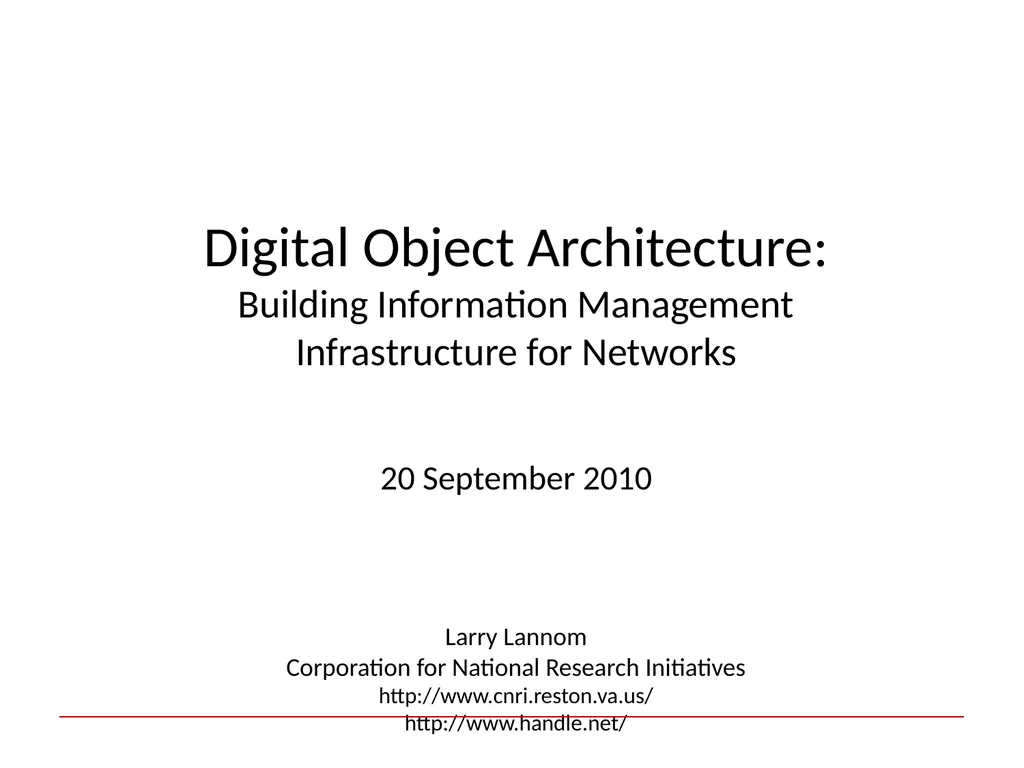
Digital Object Architecture: Building Information
Author: marina-yarberry | Published: 2025-05-29
Description: Digital Object Architecture: Building Information Management Infrastructure for Networks 20 September 2010 Larry Lannom Corporation for National Research Initiatives http:www.cnri.reston.va.us http:www.handle.net Three Initial
Download Presentation
Download the PPT/PDF: Download
Transcript:
Loading transcript…